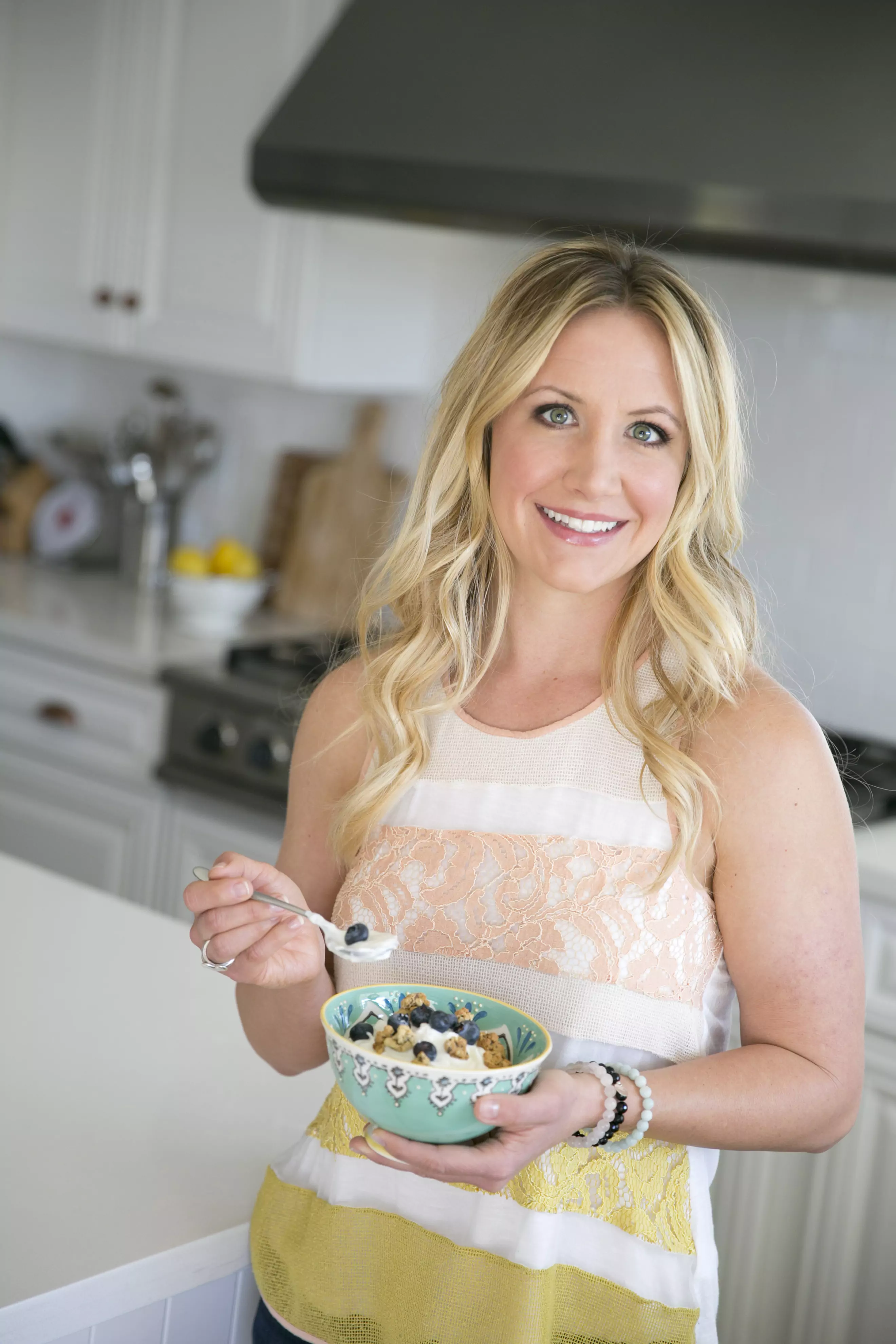In-Range is a self-guided learning course inside the Nutrisense app. It provides you with additional tools and support along your health journey.
Learn the basics
of glucose metabolism
Including how glucose is impacted by nutrition, exercise, additional types of stress, and sleep
Understand the
fundamentals of nutrition
Get access to the knowledge you need about diet essentials, meal planning tips, and mindful eating guidance.
Set yourself up
for success
Build a practical plan for long-term sustainable results you can feel good about.
What's Inside
the In-Range Course?
Meant to compliment your one-on-one work with your personal nutritionist, In-Range takes you through 12 educational modules containing written, audio, and video tutorials. Each module has five lessons, all of which guide you through different aspects of glucose regulation and metabolic health.

Glucose Basics
How to activate your sensor, log meals and activities, and interpret your first few days of glucose data.
Module Structure
Activate Your Sensor and Set Goals
In this lesson, you’ll learn how to activate your sensor and set goals for success.

Welcome to your first lesson!
To get started, let’s talk about goals. An essential piece of any health journey is ensuring you know your goals and how to achieve them. After all, a goal without a plan is just a wish!
Have you ever set out to try something new without setting a goal first? Chances are you started excited and determined to succeed but, over time, lost motivation. A clear goal can help trigger new behaviours, support focus, and sustain momentum.
As you set your goals, consider the following question:
- What your primary goals for joining Nutrisense?
- If you achieve your goals, how will your life change?
- What are some of the most significant barriers currently getting in the way of those goals?
When your nutritionist reaches out, they’ll also ask you to share your goals and check in on your goal progress as you move through the course.
Try this:
To add even more accountability, write down your goals and place them somewhere where you’ll see them frequently. Put a reminder in your calendar, a note in the Nutrisense app, or a sticky note on your fridge. You can also share your goals with a family member or friend to help you stay on track.
Did you know?
What you eat isn’t the only thing that impacts your glucose levels. Exercise, stress, and sleep all play roles. Everyone is different, which is what your nutritionist will work with you closely monitor your CGM data to help you identify what is impacting your glucose levels.
Unlock the next lessons by subscribing to the Nutrisense program
Log in the App
In this lesson, you’ll take the first step to connect your glucose and daily habits by learning how to log meals, exercise, and notes in the app.
Glucose Insights, Part 1
In this lesson, you’ll learn how to interpret some of your primary glucose values.
Glucose Insights, Part 2
In this lesson, you’ll continue to learn more about the insights feature, including what a glucose spike looks like.
Daily Glucose Score
In this lesson, you’ll learn which metrics contribute to your daily glucose score and how to compare your glucose trends from one day to another.

Nutrition Fundamentals
How carbohydrates, fats, and protein impact your glucose, how to interpret your app data, and how to mitigate a glucose spike.
Module Structure
The Basics of Nutrition
In this lesson, you’ll learn how carbohydrates, protein, and fat can impact your glucose.

How carbohydrates, protein, and fat can impact your glucose
Macronutrients and micronutrients are the foundation of all foods. Macronutrients include carbohydrates, fat, and proteins. Micronutrients include vitamins and minerals. Both are important, although macronutrients have more impact on your glucose levels than micronutrients.
Carbohydrates (carbs for short) are a primary energy source for the body. When you eat carbs, your body breaks them down into glucose. You can use the glucose for immediate energy or store it for later use. Foods like fruits, vegetables, and grain products like rice and bread are all carbohydrates. You may have heard that carbs are ‘bad’ for you, which is false. However, some forms of carbohydrates are better for you than others.
Highly processed carbs (such as chips, bread, crackers, etc.) are known as refined carbs. Refined carbs have been processed and lack intact cellular walls, causing faster digestion and a more dramatic glucose spike.
Complex carbs include whole sweet potatoes, quinoa, and pinto beans. These carbs have intact cellular walls lined with fiber, causing slower digestion and glucose release.
If you aim to improve your glucose response to certain foods, opt for complex carbs when possible. Everyone has a unique carbohydrate “threshold,” and your CGM can help you determine this.
Fat is responsible for optimal nutrient absorption, insulation, and nerve function. Fat also gets a bad rap as being 'bad' for you. Again, this is false; like carbs, some fats are better for you than others.
Good fats include fatty fish, avocado, olives, and nuts, which are essential for a balanced diet. Unhealthy fats include trans fats and highly refined oils like canola and soybean. Your glucose responds very well to healthy fats and, when paired correctly with carbs, can help to blunt a glucose spike.
Protein plays a role in tissue repair, electrolyte balance, hormone production, and immune system support. Optimal protein includes animal-based sources such as meat, poultry, eggs, fish, and dairy and plant-based sources like legumes, soy, nuts, and seeds.
Like fats, your glucose responds well to protein. You can eat it with or without carbohydrates to prevent a big glucose spike. Ask your nutritionist to calculate your macronutrients.
Did you know?
Carbohydrates, fat, and protein have different caloric values. One gram of carbohydrates and protein contains four calories, whereas one gram of fat contains nine calories.
Unlock the next lessons by subscribing to the Nutrisense program
Make Your Meal Score Work for You
In this lesson, you’ll learn more about the meal score and how to improve it.
Conduct a Glucose Experiment
In this lesson, you’ll learn how to run experiments with your CGM.
Mitigate a Glucose Spike
In this lesson, you'll learn about helpful strategies to reduce glucose spikes.
More Ways to Mitigate a Spike
In this lesson, you’ll learn about other factors that can impact glucose.

Metabolic Health
How good glucose control can improve fatigue, brain fog, and cravings.
Module Structure
What Is Metabolic Health?
In this lesson, you’ll learn why glucose is an important metabolic health marker.

How is metabolic health defined?
There are five markers included in a metabolic health assessment:
- waist circumference
- glucose
- blood pressure
- cholesterol
- triglycerides
You're in good metabolic health when all markers are within a healthy range. However, you're at a higher risk of type 2 diabetes, stroke, and heart disease when some of these markers are out of range.
When at least three markers are out of range, it's known as "metabolic syndrome."
Blood glucose is one of the most important markers for metabolic health because it directly impacts insulin, a hormone produced by the pancreas. Let's review the process of carbohydrate metabolism:
After eating, carbohydrates are broken down into glucose and absorbed into your bloodstream. This process stimulates the pancreas to release insulin. Insulin allows glucose to enter your cells as a quick energy source. If you don't need quick energy, your body will store glucose in your liver or muscle cells. The storage form of glucose is called glycogen.
Insulin's main job is to keep blood glucose levels in a healthy range. When you have too much glucose in the blood, like from excess carb intake, the pancreas has to work hard to supply enough insulin. Over time, this process can lead to "hyperinsulinemia," aka having more insulin in the blood than what's considered healthy.
Eventually, cells may respond less to insulin, leading to higher blood glucose and "insulin resistance." If insulin resistance continues too long, it can lead to type 2 diabetes and metabolic syndrome.
Insulin resistance is a complex health problem that develops over time. Unfortunately, insulin resistance can make it more challenging to lose weight and may increase food cravings and feelings of fatigue. Not a good combination for weight loss!
Did you know?
Research shows that regular exercise and managing carb intake can help the body efficiently use glucose. Ask your nutritionist how you can make healthy carb swaps in your diet.
Unlock the next lessons by subscribing to the Nutrisense program
Glucose and Fatigue
In this lesson, you’ll learn how glucose can impact energy throughout the day.
Glucose and Cognition
In this lesson, you’ll learn how good glucose control can help improve focus and concentration.
Glucose and Hunger
In this lesson, you'll learn how glucose impacts hunger and fullness.
Glucose and Cravings
In this lesson, you'll learn how stable glucose levels impact food cravings.

Glucose Influencers
How stress, sleep, and exercise can impact glucose levels and how exercise spikes can be mitigated.
Module Structure
Glucose and Exercise
In this lesson, you'll learn how exercise can support glucose.
Glucose Spikes and Exercise
In this lesson, you'll learn how certain types of exercise can lead to glucose spikes and strategies to help mitigate them.
Glucose and Stress
In this lesson, you'll learn how stress and anxiety can impact glucose.
Glucose and Sleep
In this lesson, you’ll learn how good sleep positively impacts glucose.
Glucose and Hydration
In this lesson, you'll learn how hydration impacts glucose.

Non-food Glucose Influencers
How caffeine, hydration, alcohol, supplements, and medications can cause unusual glucose responses.
Module Structure
Glucose and Caffeine
In this lesson, you'll learn how caffeine and coffee can impact glucose.
Glucose and Heat Therapy
In this lesson, you'll learn how heat exposure, also known as heat therapy, can impact glucose.
Glucose and Cold Therapy
In this lesson, you'll learn how cold exposure, also known as cold therapy, can impact glucose.
Glucose, Supplements, and Medication
In this lesson, you’ll learn how medication and supplements can impact glucose.
Glucose and Alcohol
In this lesson, you’ll learn how alcohol can impact your glucose values.

Unique Glucose Responses
You’ll learn to recognize less common glucose responses like reactive hypoglycemia, the dawn phenomenon, and double and triple spikes.
Module Structure
What Is Reactive Hypoglycemia?
In this lesson, you'll learn about reactive hypoglycemia, why it happens, and how to prevent it.
What Causes Double and Triple Spikes?
In this lesson, you'll learn about the causes of double and triple glucose spikes.
Glucose and Low-Carb Meals
In this lesson, you'll learn how eating low-carb can impact your glucose levels.
What Is the Dawn Phenomenon?
In this lesson, you'll learn about a glucose response known as the dawn phenomenon.
Glucose Responses While Asleep
In this lesson, you'll learn why glucose may fluctuate during sleep.

Glucose Metabolism
You'll learn why maintaining a healthy weight requires good glucose control, the benefits of fasting, and how to achieve metabolic flexibility.
Module Structure
What Is Glycogen?
In this lesson, you'll learn more about how your body uses and stores glucose.
The Relationship Between Weight and Glucose
In this lesson, you'll learn how glucose may impact weight.
All About Metabolic Flexibility
In this lesson, you'll learn what it means to be metabolically flexible.
Glucose and Fasting
In this lesson, you'll learn how fasting can improve your glucose levels.
Glucose and Illness
In this lesson, you'll learn how an illness can impact glucose.

Lifestyle Experiments
You'll learn how movement before meals, eating with your circadian rhythm, and breathwork can help optimize your glucose levels.
Module Structure
Non-food Influencers
In this lesson, you'll learn how to experiment with stress, sleep, and exercise for optimal glucose.
Movement Around Meals
n this lesson, you’ll learn how to improve your glucose with light movement.
Glucose and Sleep Quality
In this lesson, you'll learn how changing your sleep routine may improve your glucose.
Glucose and the Circadian Rhythm
In this lesson, you'll learn more about circadian rhythms and glucose.
Glucose, Meditation, and Breathwork
In this lesson, you’ll learn how meditation and breathwork can impact glucose.

Meal Planning
You'll learn how to design a healthy pantry and fridge, make easy meals and snacks, and stay on track while traveling.
Module Structure
Glucose-Friendly Staples for Your Pantry and Fridge
In this lesson, you'll learn how to stock your kitchen with ingredients for balanced meals.
Plan Glucose-Friendly Meals
In this lesson, you'll learn how meal planning can help you create balanced meals without spending hours in the kitchen.
Make Glucose-Friendly Meals and Snacks
In this lesson, you'll learn how to make quick, glucose-friendly meals and snacks.
Avoid Artificial Sweeteners and Hidden Sugars
In this lesson, you'll learn how to identify and avoid unnecessary sweeteners.
Stay on Track While Traveling
In this lesson, you'll learn how to maintain healthy habits while on the go.

Diet Essentials
You'll learn the importance of food quality, the issue with food labels, and how to overcome a weight loss plateau.
Module Structure
The Importance of Food Quality
In this lesson, you'll learn how food quality impacts glucose.
Decode Food and Nutrition Labels
In this lesson, you'll learn how to understand food labels.
Glucose and Diet Protocols, Part 1
In this lesson, you'll learn how the Standard American and Mediterranean diets can impact glucose.
Glucose and Diet Protocols, Part 2
In this lesson, you'll learn about different low-carb diets and how they impact glucose.
Glucose and Weight Loss
In this lesson, you'll learn about different variables that impact weight.

Mindful eating
You'll learn how to recognize your hunger cues, practice mindful and intuitive eating habits, and advocate for yourself while eating out.
Module Structure
Glucose and Hunger Cues
In this lesson, you'll learn about the different types of hunger.
Intuitive Versus Emotional Eating
In this lesson, you'll learn how to navigate emotional eating.
Glucose, Social Cues, and Food Triggers
In this lesson, you'll learn how to navigate social situations.
Manage Glucose While Eating Out
In this lesson, you'll learn how to eat out without sacrificing your health goals.
Non-scale Victories
In this lesson, you'll learn the importance of non-scale victories.

Long-Term Success
You'll learn how to set smart goals and how long-term glucose monitoring can help you reach your true health potential.
Module Structure
Set Goals for the Long-Term
In this lesson, you'll learn about SMART goals.
Change Habits for Good
In this lesson, you'll learn how to navigate habit change.
Benefits of Using a CGM Long-Term
In this lesson, you'll learn the benefits of long-term glucose tracking.
Course Content Review
In this lesson, you'll review the course's key points.
Course Wrap-up
In this lesson, you'll learn how to use this information for long-term success.






















